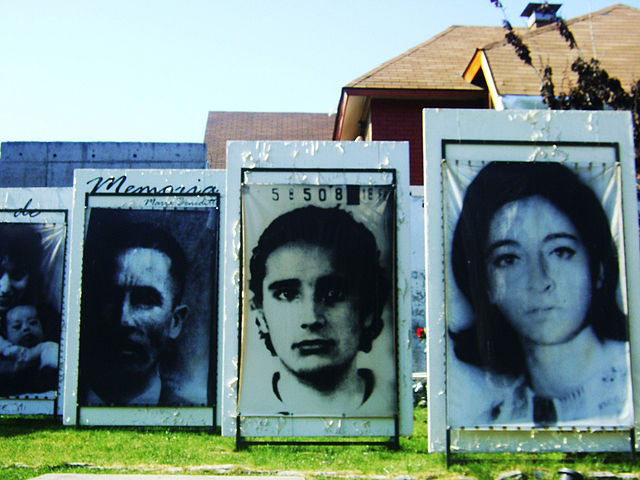An enforced disappearance is the secret abduction or imprisonment of a person with the support or acquiescence of a state followed by a refusal to acknowledge the person's fate or whereabouts with the intent of placing the victim outside the protection of the law. Often, forced disappearance implies murder whereby a victim is abducted, may be illegally detained, and is often tortured during interrogation, ultimately killed, and the body disposed of secretly. The party committing the murder has plausible deniability as there is no evidence of the victim's death.
Women of the Association of Families of the Detained-Disappeared demonstrate in front of La Moneda Palace during the Pinochet military regime.
Flag with images of those who disappeared during a demonstration in Buenos Aires to commemorate the 35th anniversary of the 1976 coup in Argentina
Demonstration in Warsaw, reminding about the disappearances of oppositionals in Belarus
Disappeared people in art at Parque por la Paz at Villa Grimaldi in Santiago de Chile
In criminal law, kidnapping is the unlawful abduction and confinement of a person against their will. Kidnapping is typically but not necessarily accomplished by use of force or fear; i.e., it also usually involves menace/assault or/and battery; but it is still kidnapping without those additional elements, or if a person is enticed to enter the vehicle or dwelling willingly.
K. J. Ståhlberg (in the center-right), the first President of the Republic of Finland, and his wife at the Helsinki Central Station after their kidnapping. In the middle of picture their daughter Elli Ståhlberg stands behind them.
The abduction of Dinah, (watercolor, c. 1896–1902 by James Tissot)
Arrested kidnappers in Rio de Janeiro, Brazil lying on the ground







